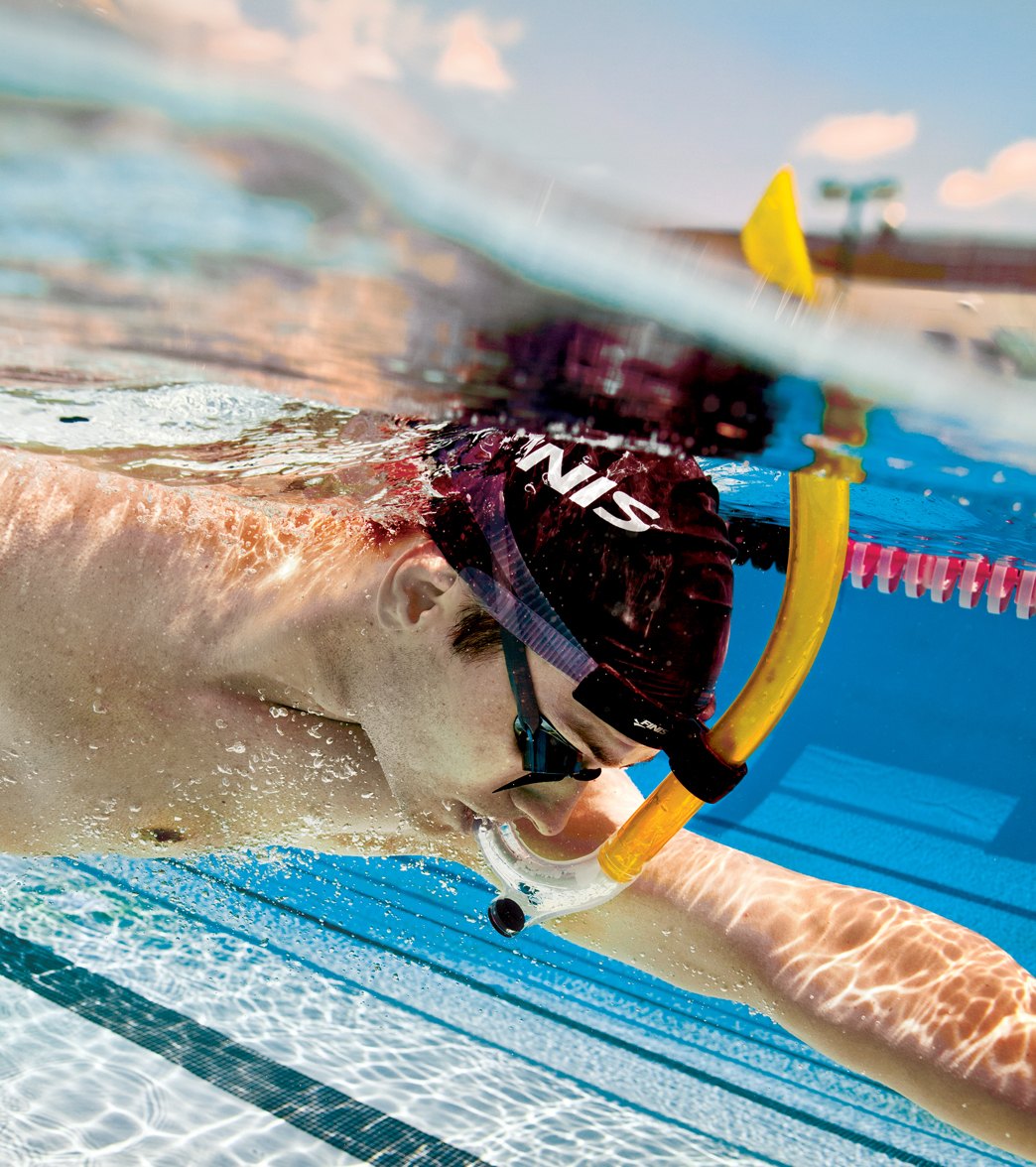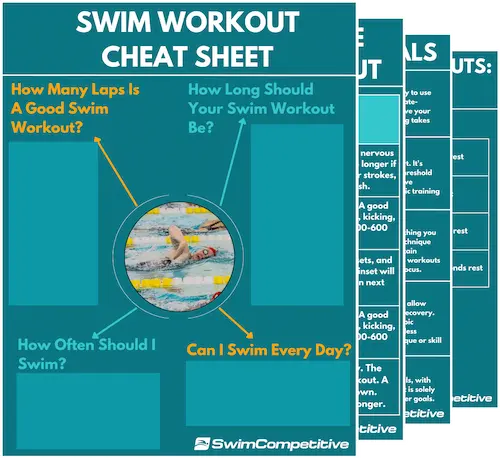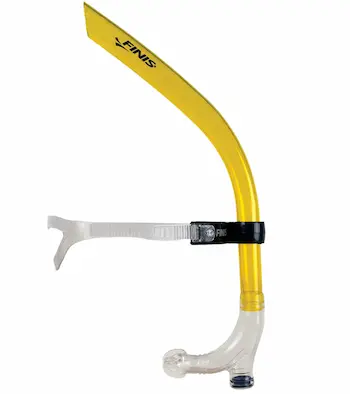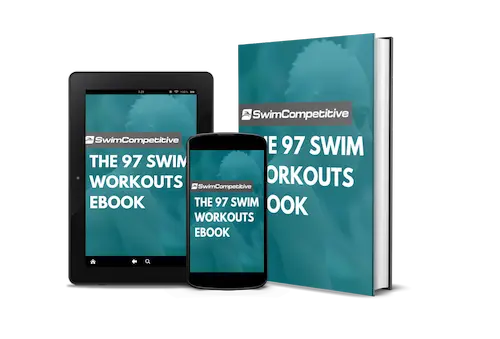As a swimmer, you probably realize just how important proper breathing is, but what you don’t realize is the fact that most of us aren’t utilizing our breathing and lung capacity to the fullest which means you’re losing out on possible performance perks both in training and competition which can aid you in swimming faster and bringing home that important medal, PB, or qualifying time you dream about at night.
Nowadays, most people, and unfortunately, athletes as well have a tendency to utilize shallow chest breathing instead of natural diaphragmatic breathing which can aid in better swimming-performance and even recovery.
That’s why in today’s article we’ll be taking a look at a number of dryland and in-pool breathing exercises aimed at improving both our diaphragmatic breathing, our lung capacity, and also our ability to focus and perform during racing and training situations.
Benefits of Proper Breathing and Breathing Exercises for Swimmers
Before we start, let’s have a look at a couple of benefits of performing these pool and dryland breathing exercises for swimmers-
1. More Energy for the Body
The respiratory system and the inhalation of oxygen play an important role in creating energy for the body to use during training and racing. The cells in your body use the oxygen you breathe to get energy from the food that you eat during a process called cellular respiration.
During this process, the cells use oxygen to break down sugar and other nutrients in order to produce the energy your body needs to function during exercise.
When you are breathing properly and deeply, and not shallowly, you are able to maximize oxygen intake ensuring that your body can convert the food you consume into usable energy for your swimming at the most optimal rate.
2. Increased Lung Capacity
Have you ever wondered why some people can hold their breath longer than others? This has to do with lung capacity. The bigger your lungs are able to expand, the more air and oxygen you are able to hold.
This means that you’ll be able to use more vigorous breathing patterns when swimming and swim underwater for longer periods of time without being out of breath.
Increased lung capacity will mean that you are able to execute better underwaters during training and competition which is a critical part of fast swimming. It’ll also help you to stick to those hard but worth-while breathing patterns when you swim, like a 50m freestyle sprint without breathing or something similar.
3. Better Focus and Stress Relief
Despite all of the obvious physical benefits of proper breathing and added lung capacity, there are also some key psychological aspects that can be enhanced using breathing exercises.
Some of the most obvious is the ability to lower your anxiety and increase your focus before that big championship final or that hard training set that you know you shouldn’t stress about, but you do anyway.
Using certain breathing exercises (we’ll discuss some later), can help to lower your anxiety and help you to focus on the task at hand by slowing down your heart rate and diverting your focus to your breathing and away from all of the external fuss that created your anxiety in the first place, like “what if I don’t win?, I worked all season for this, I don’t want to disappoint my coach“ and so on.
4. Faster Swimming Times in Training and Competition
When we take a look at all of the other benefits listed above, it’s going to be quite obvious that you’ll be able to swim faster when implementing these techniques.
Optimal energy levels means that you’re always able to train and race at your peak since your body will be fueled and ready to perform.
Better lung capacity equals better underwaters, meaning you are able to swim faster while getting a huge head start on the rest of the field.
Better focus and lower anxiety means that you won’t be swimming slower due to extensive stress taking control of you and buggering up your race and everything you’ve worked for the entire season since you will be in control and will be sharp and ready to do exactly what you trained for.
Breathing Exercises for Swimmers: Dryland and In-Pool
Here are the 7 best breathing exercises for swimmers-
- Use a respiratory training device.
- Train with a snorkel and snorkel cap.
- Extend your underwaters.
- Wall sit with deep breathing.
- Use breathing patterns when swimming.
- Abdominal hollowing breathing exercise.
- Box breathing exercise and technique.
1. Use a Respiratory Training Device
Training with a respiratory device is one of the best ways to increase your lung capacity and swimming performance in the water. This dryland breathing exercise is great since it’s easy to measure progress and you can see improvements quite quickly.
In fact, in a study published by the US National Library of Medicine, it was found that swimmers were able to increase 100m sprinting times by 1.7% in the span of just 6 weeks by using a respiratory training device which is a significant amount considering the short length of time that they were using the device.
During the study, 16 competitive swimmers were randomly assigned to an experimental group or a placebo control group where participants performed a series of physiological and performance tests before undergoing the 6 week training period.
Swimmers only had to do 30 repetitions on the device twice per day in order to achieve this positive effect on swimming performance.
2. Train with a Snorkel and Snorkel Cap
Training with a snorkel and snorkel cap combination is a great breathing exercise that you can do in the pool while swimming. A snorkel cap is essentially a little cap that you put over the opening of your snorkel in order to limit the amount of air you can inhale at once.

There are a couple of benefits in doing this, all in some way or another relevant to better breathing and increased oxygen uptake while swimming. Let’s have a look at them-
Lung conditioning: Using the combination of a swimmer’s snorkel and a snorkel cap can increase the lung workout load by up to 40%. This means that your lungs will become stronger and that lung capacity will expand as well as your ability to effectively inhale air.
Improves breathing: this breathing exercise can improve your breathing by teaching you a deeper breathing technique and style that will help you to control your breathing during hard swimming sets and will also replicate high-anxiety race day environments so that you can be better prepared.
Replicates higher altitude workouts: By limiting the amount of oxygen you can consume at once this breathing exercise increases the amount of red blood cells your body produces. Red blood cells are responsible for carrying oxygen in your body, and the more you have, the more effectively your body will be able to distribute oxygen.
Strengthens intercostal muscles: the intercostal muscles are groups of muscles located between the ribs and help to form and move the chest wall. They are mainly involved in the mechanical aspects of breathing and strengthening them will help to improve your breathing efficiency.
Hypoxic/ Low oxygen training: By doing low oxygen training you increase the ability of your muscles to function when oxygen levels are low, something that is critically important at the end of a race or hard set where most swimmers start to drop off because they are too tired and out of breath to continue.
Related: Best swimming snorkels for training
Do You Want to Make Every Lap Count?
Stop wasting your time in the pool feeling lost and doing directionless swim workouts, and start training effectively! Our ebook contains 97 structured and goal-orientated swim workouts to help you become a better, faster, and fitter swimmer. Whether you’re a complete beginner or a seasoned pro, there are a multitude of workouts for every type of swimmer.
3. Extend Your Underwaters
Over the last few decades the underwater dolphin kick has become the fifth unofficial stroke of swimming and in more recent years it has proven itself to be extremely powerful for winning and dominating races.
Look at 100m butterfly world record holder- Caeleb Dressel for example, he is constantly ahead of everyone else and absolutely dominates the rest of the field coming off the blocks and walls thanks to his ridiculous underwater dolphin kick.
Just check out how far ahead is directly at the beginning of the race by having a killer underwater dolphin kick-
A key point of performing good underwaters is to not only have mastered the technique and physical conditioning to perform it, but also being able to effectively hold your breath when doing it.
Extending your underwaters in the pool when training is a simple in-pool breathing exercise that you can do that won’t only increase your lung capacity, ability to function on low oxygen levels, and breath control but will also make you a faster swimmer.
The best part? It doesn’t have to be complicated. Start by doing 1 extra dolphin kick of every wall and setting small goals like doing 2-3 dolphin kicks off every wall on certain training days.
4. Wall Sit with Deep Breathing
This is a great dryland breathing exercise that you can incorporate as part of your dryland training routine, as it isn’t only focused on breathing but also engages the leg muscles and provides a great quad burn.
To perform it go into a wall sit position, reach your arms forward and then practice long, slow deep breathing. Inhale deeply and then completely exhale using a 5 second count or so to expel as much air as possible.
During this dryland breathing exercise you will be keeping your spine against the wall and in a neutral position forcing you to use the diaphragm and abdominal muscles to perform the inhalation and exhalation and not relying on the spine, neck, or shoulders to expand the rib cage, which is exactly what we want to avoid shallow-chest breathing.
All in all, I really like this dryland breathing exercise as it can easily form a part of your dryland training plan and also serves as a great breathing exercise that teaches proper breathing mechanics to swimmers.
5. Use Breathing Patterns When Swimming
Another great in-pool breathing exercise for swimmers is using breathing patterns when you swim. This breathing exercise is great since it’ll help you not only to be ready to swim on low oxygen for the end of your race, but also to learn to control and maximize your breathing efficiency.
I recommend starting slowly and progressing from there. Most competitive swimmers should be able to breath every 5 to 7 strokes, but if that’s too challenging for you, start by breathing every 4 or every 3 strokes.
Also make sure not to use a breathing pattern only on freestyle, use it on butterfly too! (that’s the only other stroke that you can anyway). I remember way back when I wasn’t even able to hold a 2 down one up breathing pattern for a 50 butterfly race.
Nowadays, I train butterfly with a 3 to 5 down, one up breathing pattern and have seen some great improvements in my swim times from doing this. That said, it’s not necessary to always train like this- it definitely is tough, and sometimes that oxygen can be better used to work on things like technique.
So make sure to incorporate breathing patterns here and there, especially during race pace sets, but also don’t overdo it.
Note– for this breathing exercise, I always recommend having a coach or teammate nearby to watch what you are doing, just in case you decide to take a nap in the pool.
6. Abdominal Hollowing
Abdominal hollowing is another excellent dryland breathing exercise that isn’t only going to train and improve your breathing patterns and technique, but will also work the deep core stabilizers in your body.
Having a strong core in swimming is really important, and the deep core stabilizers are muscles that don’t conventionally get trained. By performing this exercise you are essentially getting the best of both worlds and the best part is that you only have to do a couple of reps for a few sets everyday or every other day.
You can perform this exercise by standing tall, or laying on your back and then contracting and pulling in the abdominal muscles without moving the spine or pelvis. Visualize yourself sucking your belly button all the way back to your spine or the floor. Then, hold this for a 5-second count and slowly inhale.
The idea of this exercise is to train the core muscles to better stabilize the spine and pelvis so that you are better able to attain and complete exhalation during respiration which will ensure that you are able to take in as much as possible when you inhale again- something which will come in very useful during racing or hard training sets.
7. Box Breathing
I’ve found the box breathing technique to be one of the most effective breathing exercises for calming myself down before a big race and getting into a focus zone, where I can prepare myself to swim as fast as possible.
Fun fact: This breathing technique is also known as the Navy SEAL breathing technique or tactical breathing and it’s a super simple and effective way to help you to regain calm and control of your thoughts when you are in a stressed position.
To perform this breathing exercise do the following-
- Inhale for 4 seconds
- Hold your lungs full for 4 seconds
- Exhale for 4 seconds
- Hold your lungs empty for 4 seconds
You can repeat it a few times if you wish and can also play around with longer lengths of time.
This technique is also discussed in many sports performance books, like The Champion’s Mind by Jim Afernow, which is a must-read for all athletes who want to get on top of their mental game.
You might think that this breathing exercise doesn’t have any physical benefit and decide to neglect it, but let me just remind you about how our bodies have a tendency to completely shut down and lose performance when we are under a lot of stress.
For some more traditional style strength exercises, consider checking out my article on dryland exercises for swimmers.
Swim Faster with These Breathing Exercises for Swimmers
Breathing is one of the most simple and natural occurring processes in our body- something we barely have to think about, something we take for granted, and something that can have a much larger effect on our performance in the pool than we realize. So why not maximize it?
So with that said, I hope you found this article helpful and that you are ready to try out a couple of the breathing exercises I mentioned so you can dominate your swim training and races.










